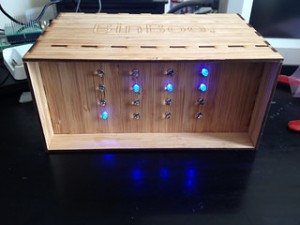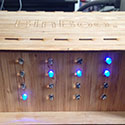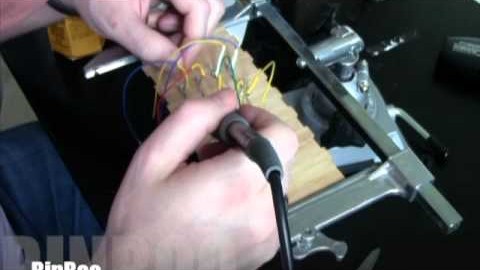The idea for AddOhms #8 has been around for quite some time. I’m always trying to find ways to explain why current limiting resistors are necessary. So while working in the shop one day, I decided to play with some LEDs and a bench-power supply. Then I decided to record what happens.
Short build-lapse video of building up the front panel “matrix” used in BinBoo. This isn’t a true LED matrix. Instead it combining all of the LEDs into a common Anode, since the Cathodes are all controlled by individual outputs of the TLC5940.
I decided to wire up 16 LEDs, even though a binary clock only needs 11 or 12. This gives some flexibility to other uses for the box, like a random sci-fi computer pattern.
Project Page: BinBoo = Binary clock + Bamboo
How many times have you been part way through ordering parts for a project when you realize the distributor you are using, doesn’t have any of the part you need in stock? Or maybe you want to design a kit and compare prices of parts. This is where findchips.com comes into play. This awesome free resource will scan inventory across a variety of distributors for a given part number. Not only will you see inventory levels but it is also a fast way to compare prices.
Several months ago I started a project to build a Binary Clock, using a Laser Cut enclosure. The plan was to use Ponoko’s laser cutting service. Looking through the materials available, I decided to use Bamboo. Knowing I was going to build a Bamboo enclosure for a Binary clock, helped me come to the name BinBoo. Even though I call it a Binary Clock, it is actually a BCD clock…
There are still a few issues to work out, but I am very happy with v1.
Status: Completed
Hackster.io Project Page: https://www.hackster.io/baldengineer/binboo
Github Code: https://github.com/baldengineer/BinBoo

Abstract
Binary + Bamboo = BinBoo. This project is my first attempt at making a laser-cut enclosure. Ponoko was used to cut the project which holds itself together. The LEDs are driven by an Arduino-based clock that incorporates a RTC1307, FTDI chip, ATmega328, and TLC5940.





